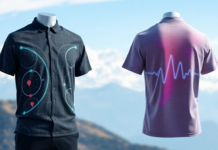A recent study has delved into the potential of generative AI models like ChatGPT and DALL-E 3 to enhance the efficiency of fashion design processes while identifying both emerging and established trends within the industry.
These sophisticated generative AI tools possess the capability to create original text and imagery, leading to more streamlined workflows in fashion design.
Conducted by researchers at Pusan National University in South Korea, the study was spearheaded by Professor Yoon Kyung Lee and Master’s student Chaehi Ryu from the Department of Clothing and Textiles. Their investigation highlights the necessity for advancements in AI to facilitate its effective application in fashion design.
“To use AI effectively in fashion, we must understand the characteristics of generative AI models and make informed judgments of where they can be applied. In this study, we studied how effective prompt engineering can be used to generate realistic fashion collection images through AI,” Professor Lee stated.
In their research, the team utilized ChatGPT-3.5 and ChatGPT-4 to analyze historical men’s fashion trends up to September 2021 and predict styles for the fall/winter season of 2024. Additionally, they employed DALL-E 3 to visually capture seasonal fashion trends and conceptualize innovative fashion collections.
The researchers extracted design elements from these predictions, labeling them as “initial codes,” which they refined using “modified codes” sourced from Vogue’s trend data and relevant fashion design literature. This process led to the consolidation of these insights into six final codes: trends, silhouette elements, materials, key items, garment details, and embellishments.
With these codes, the team constructed 35 prompts for DALL-E 3 to visualize unique outfits for a hypothetical 2024 Fall/Winter fashion show. Each prompt was executed three times, resulting in 105 images that incorporated various aspects such as aspect ratios, camera angles, model appearances, runway designs, and audience moods.
The AI model successfully interpreted the prompts with a 67.6% accuracy rate, particularly excelling when descriptive adjectives were included. Some of the generated images closely resembled actual men’s fashion collections for the anticipated season. However, the study noted challenges, as DALL-E frequently defaulted to conventional ready-to-wear styles and struggled to capture complex trend elements like gender fluidity.
This finding suggests that while trend keywords are useful, they may not be sufficient for accurate generation without additional model training.
“Our results show that expertly worded prompts are necessary for accurate fashion design implementation of generative AI, highlighting the important role of fashion experts. With further learning and improvements, generative AI models like DALL-E 3 will help fashion designers create entire fashion collections more efficiently, while supporting their creativity, and also help non-experts understand fashion trends,” Professor Lee added.
The research paper, titled “Effective Fashion Design Collection Implementation with Generative AI: ChatGPT and DALL-E,” was published in the Clothing and Textiles Research Journal on June 22, 2025.


































